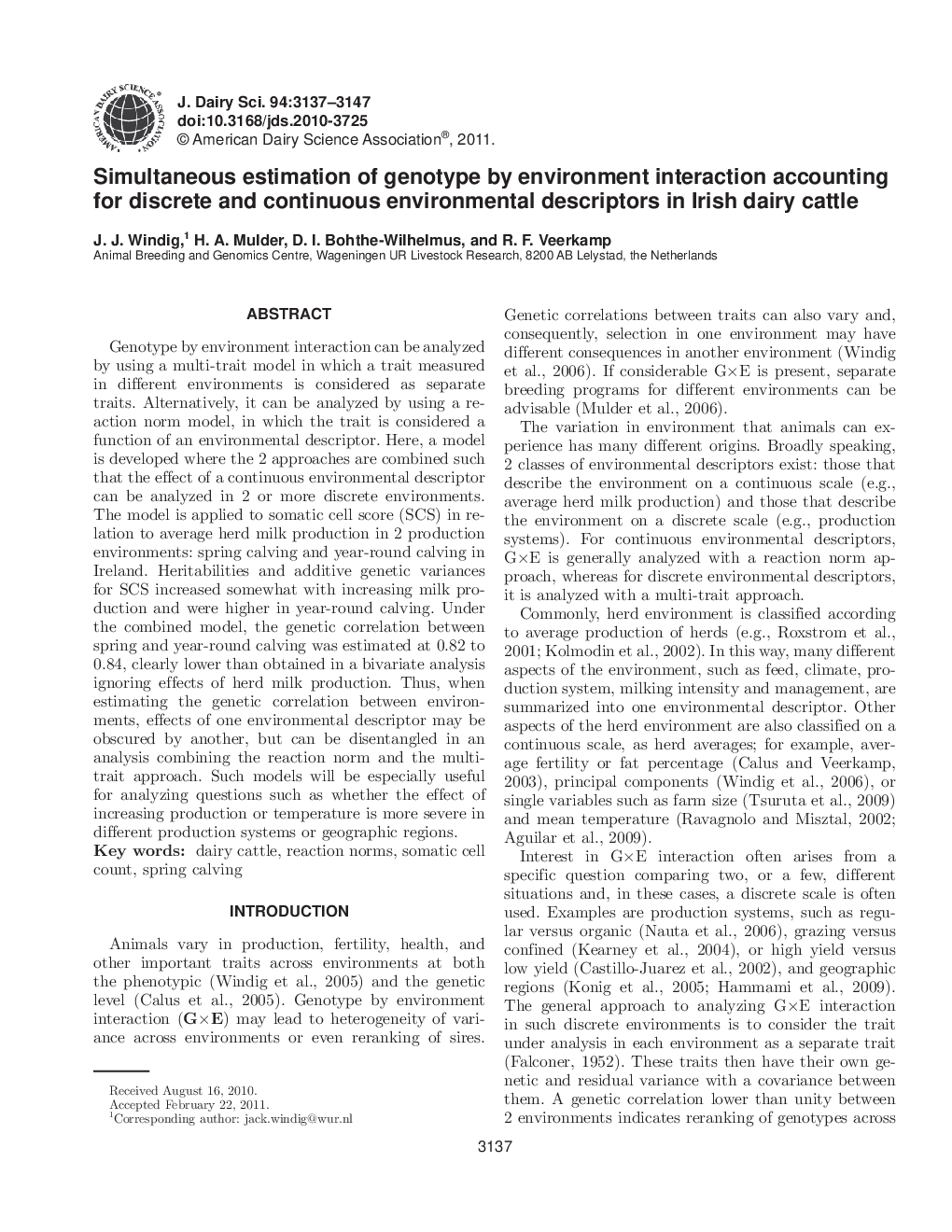| Article ID | Journal | Published Year | Pages | File Type |
|---|---|---|---|---|
| 10978589 | Journal of Dairy Science | 2011 | 11 Pages |
Abstract
Genotype by environment interaction can be analyzed by using a multi-trait model in which a trait measured in different environments is considered as separate traits. Alternatively, it can be analyzed by using a reaction norm model, in which the trait is considered a function of an environmental descriptor. Here, a model is developed where the 2 approaches are combined such that the effect of a continuous environmental descriptor can be analyzed in 2 or more discrete environments. The model is applied to somatic cell score (SCS) in relation to average herd milk production in 2 production environments: spring calving and year-round calving in Ireland. Heritabilities and additive genetic variances for SCS increased somewhat with increasing milk production and were higher in year-round calving. Under the combined model, the genetic correlation between spring and year-round calving was estimated at 0.82 to 0.84, clearly lower than obtained in a bivariate analysis ignoring effects of herd milk production. Thus, when estimating the genetic correlation between environments, effects of one environmental descriptor may be obscured by another, but can be disentangled in an analysis combining the reaction norm and the multi-trait approach. Such models will be especially useful for analyzing questions such as whether the effect of increasing production or temperature is more severe in different production systems or geographic regions.
Related Topics
Life Sciences
Agricultural and Biological Sciences
Animal Science and Zoology
Authors
J.J. Windig, H.A. Mulder, D.I. Bohthe-Wilhelmus, R.F. Veerkamp,
